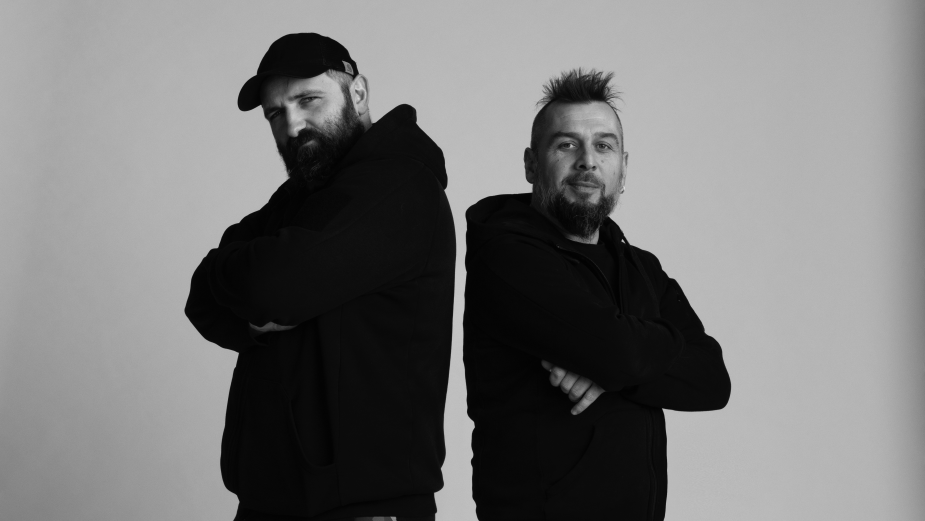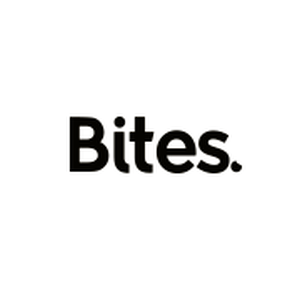
The VFX Factor: Bites Studio’s SFX Engineers on the Never-Ending Story of VFX

For the latest VFX Factor interview, LBB speaks with Bites Studio’s SFX engineers Krzysztof Urbaniak and Paweł Kwarciak.
From his early years, Krzysztof Urbaniak strongly connected with the automotive industry and mechanics, having a passion and keen understanding for motorcycles and everything related to them. Having since taken this technical knowledge to the VFX industry, Krzysztof has now worked in the world of special effects for the past seven years - and has been at Bites Studio for the past three. Impossible to miss, Krzyś is the soul of Bites who you can speak to about any subject.
Paweł Kwarciak, meanwhile, has been working with Bites since the launch of the studio. A specialist in special effects, in particular elements such as fire and liquid, his technical mind produces unique visuals and finds solutions to even the most difficult, sophisticated challenges. Outside of work, he is involved in music - a former rocker who now rocks the SFX world!
Q> There are two ends to the VFX spectrum - the invisible post and the big, glossy ‘VFX heavy’ shots. What are the challenges that come with each of those?
Krzysztof> Well… the size of the project or effects are not so important. For me, the biggest challenge is the very beginning of the production process. We don’t always know exactly what we have to face because we’ll test certain things, then the client comes and says that it’s not like that and we have to act differently, work much faster and sometimes work freestyle.
Paweł> For example, the project we are currently working on is not a large production, but it required us to prepare two rigs completely from scratch, which took us two working days. During the shooting for the project, it turned out that we only needed one of them!
For larger projects like Ruben Latre’s ‘Ghirardelli’ spot, which we shot last year, we had to re-do lots of mock-ups. We got a cast/mockup in which a wild chocolate river is supposed to flow, a canyon with this chocolate on the bend, etc. It was a challenge, because everything had to be rigged to match the director’s idea. And we got a bare shell, a very nice bare shell of this canyon anyway, but in order for something to happen there, we had to move many of our grey matter ;)
Krzysztof> With such projects it takes a lot of time to reset the set and prepare it for another take. We got ready for the shot, then there was a shot of chocolate pieces disintegrating in the air and a wave of chocolate flooding it. Then we have to do it all over again, assemble the whole mock-up and get the rigs ready for a repeat shot.
I guess it’s hard to distinguish between small and large productions, because each effect is individual and really everything depends on the rigs needed, the director’s vision, and the needs of the client.
Q> As a VFX person, what should directors be aware of to make sure you do the best possible job for them?
Krzysztof> First of all they need to be conscious of time constraints. Two or three days before the start of the projects, the director will often say that something has to happen, some rig/effect needs to be changed. However, sometimes it is not possible to do it in such a short time.
Paweł> Every director who comes up with something, a question on some complicated shot, should be aware that everything takes time. It takes time to get to what they originally envisioned. In the SFX environment, we believe that nothing is impossible, but above all, time is the only limit. We are tools in the hands of this director and we have to recalculate their ideas to our capabilities so that they get the picture they want.
Q> Think about the very, very start of a project. What is your process for that? Do you have a similar starting point for all projects?
Krzysztof> We sit down, talk to the director, talk to our supervisor about what is needed, what is possible, what is not possible, and what we want to achieve. We figure out what we have. Do we have to build something from scratch or upgrade some rig? Sometimes we suggest what could look better, what would be ugly, what would look pretty.
Q> Once you give your ideas and advise what to do, what happens next?
Paweł> We go to the workshop and build. We put all these theories into practice. Despite the fact that these effects have been similar everywhere for so many years, you always have to give something back, you can improve, tweak.
Krzysztof> We set up the camera, pull out the rigs and test. We see if it works or not. We complete the rigs. The devil is in the details. You can pour and pour, pour wide, low, fast, slower, with energy, without energy, that’s why we focus on details, on all components and look for the best solutions to create effects.
Later, we consult with the director and further improve the rigs according to his comments until we finally reach perfection.
Paweł> Communication with the director is very important. I talk to Jacek Szymański or Arek Żyłka (directors) more than once and they say 'Paweł is supposed to do ‘psshsh’, not ‘psshsh’ (this verbalisation of this noise is also quite important because each sound means something else!). In our SFX team we understand each other with sounds. We don't have to talk and everyone knows what to do.
Q> We imagine that one of the trickiest things with VFX is, time issues aside, deciding when a project is finished! How do you navigate that?
Paweł> It’s hard to agree on that. You can always do better, you can go further, longer, differently, etc. It can be a never-ending story. It’s up to the director and the client to decide ‘We got it’. There are always 1000 different ways to do it, we can have endless fun.
Q> Is there a piece of technology or software that's particularly exciting you in VFX? Why?
Krzysztof> I am fascinated by 3D printing technology. I would love to design and implement these printouts so that these devices look nice, but unfortunately, due to time, it usually takes three or four days to complete the project, and this technology is time-consuming. This is something extra for me because you can print anything.
Paweł> I'm totally analog and I do everything manually. Physics and chemistry mostly. All the laws of physics apply.
Krzysztof> Also for me it is the best bashtable (below) because it is loud. This is a table where you put things, the cylinders from the bottom hit the table top and it all goes up. It's a very simple effect, I like it, it's like tapping your hand against the countertop, but I find it cool because these actuators make the whole machine noisy.
Paweł> I, on the other hand, like the elements. I like fire the most, and liquids second. Blast fire, shoot liquid.
Q> How did you navigate your role during the pandemic? Are there any lessons you've learned or experiences that you had that you’ve kept with you?
Krzysztof> During the pandemic, we worked in a reduced team, maintaining all security measures. What also changed was that all the creators and agencies were not with us in the studio but on the other side of the computer, so we had to wait for their decisions.
Paweł> We also worked strange hours. For example, we didn’t start at 6am but at 12pm because somewhere on the other side of the world it was 6am. The whole covid situation has shown us that many things can be done by connecting and setting things up online.
You can work remotely, but we all also learned to work more responsibly for our colleagues that we work with side by side.
Q> VFX is a true craft in the classic sense of the word. Where did you learn your craft?
Paweł> Now let’s go back to 1994… ;) But seriously, it’s our craft, it’s years of experience and not only in the sphere of SFX. All the skills that Krzys and I have were developed not in special effects, but elsewhere.
Krzysztof> Generally, we are connected by the fact that we used to be mechanics. We built cars. The experience has certainly helped us to be where we are now. It’s a lot of technical knowledge... certainly a technical mind.
Paweł> In order to make good special effects, you must first of all have technical skills. No one will become a showman if they can’t work technically. Welding, cutting, bending, building, machining, combining technology with a lot of imagination, that’s what we do. You have to be a bit of an artist.
Krzysztof> If we were to talk about everything we did, it could take us three days.
Paweł> In addition, both me and Krzysztof have stage experience. I have been creating special effects for the stage for over six years - concerts, galas, sports events, confetti shooting, etc.
Krzysztof> I started my adventure in film in the rig.
Q> And how did you first get into this industry?
Krzysztof> I started my adventure with SFX in another studio that was later bought by Bites and I stayed.
Paweł> After working in stage effects, I started working at Bites and it’s already been eight years! Time flies. I've been with Bites since we started creating our first effects in the basement. I’m really glad that it turned out like this. The best part is that I love this job. It is a passion for me, I think we both agree. If you like what you do, you don’t get tired.
Krzysztof> Definitely!
Q> What was your very first job in the industry and what were the biggest lessons that you learned at that time?
Paweł> There were a lot of lessons. In the first headquarters of Bites, we sat with the first effects team for 12 hours a day and tested because no one had ever told us how to do it. There is no tabletop school, everything we currently have is from our experience sitting in this basement, testing and testing, tearing apart and putting back together into our Bites whole. It took us two years of splashing, pounding, exploding, tossing and spilling until we got to these effects that we are creating now and are still looking for new ones!
Krzysztof> My story is similar, only it started in a different studio. We gained the most experience by doing projects. Each one has something you will remember.
Q> What was your first creative milestone in the industry – the project you worked on that you were super proud of?
Krzysztof> Oh, I remember it perfectly. This was the first project with Ronald Koetzier. Ronald Saproso milk for Pakistan. Huge project. Four camera sets, a few good shooting days. It was epic!
Paweł> Mine is also my first project with Ronald. Sprite with milk and juice for Pakistan. It was a huge project, because in our first studio location we had 400 m2 low and three sets. It was quite a challenge.
Q> From a VFX perspective, which ads have you seen recently that you've been particularly fond of and why?
Krzysztof> I liked our recent Redefine Meat commercial made at Bites. I didn’t take part in it, but I watched the process of creating effects and then the final effect. No new effect has been invented for a long time, so you can only evaluate the aesthetic values.
Paweł> In Redefine Meat there is a very modern creation. It's a combination of tabletop effects with life action. Cosmos. I really like it too.













